From the Desert to the Beach: Albuquerque Dealer Richard Levy Brings a Bit of Local Flavor to Art Miami This Year
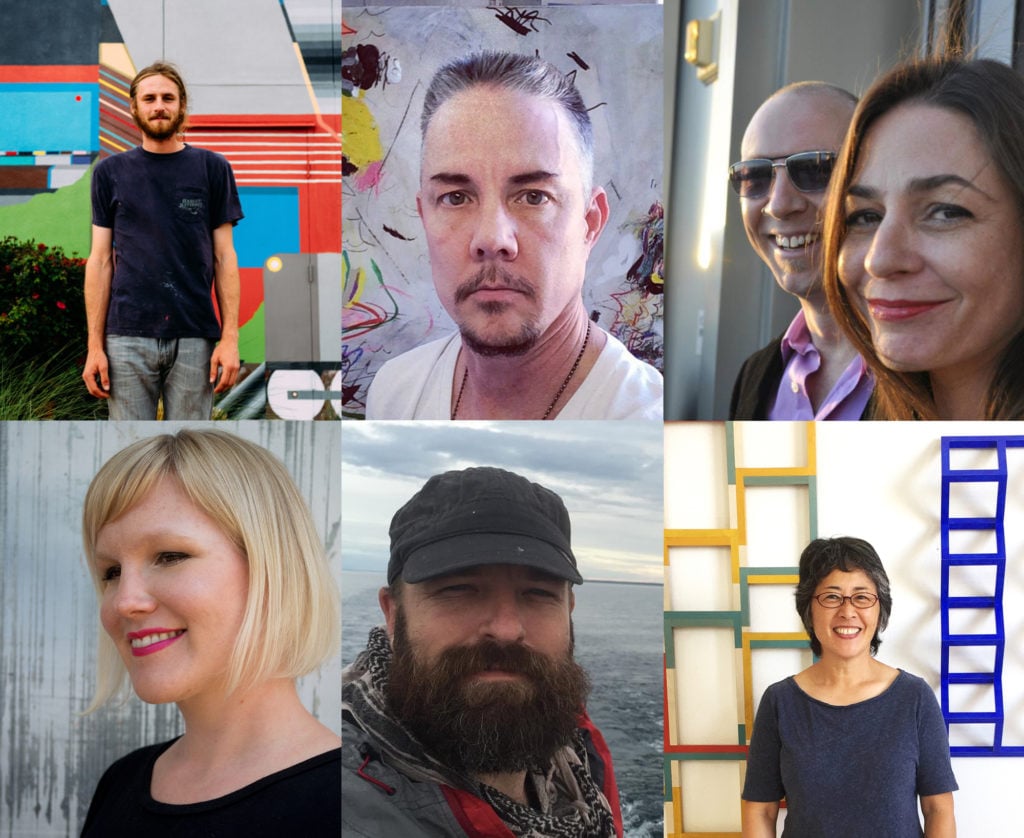

Artnet Gallery Network

As Richard Levy Gallery prepares to head out east for its turn at Art Miami this year, it’s bringing a little bit of home along with it. Seven of the 16 artists in the gallery’s booth are living and working in Albuquerque, where the gallery is based.
For Viviette Hunt, the gallery’s director, these artists represent the distinct flavor of the Albuquerque art scene, and the strength of the work coming out of it.
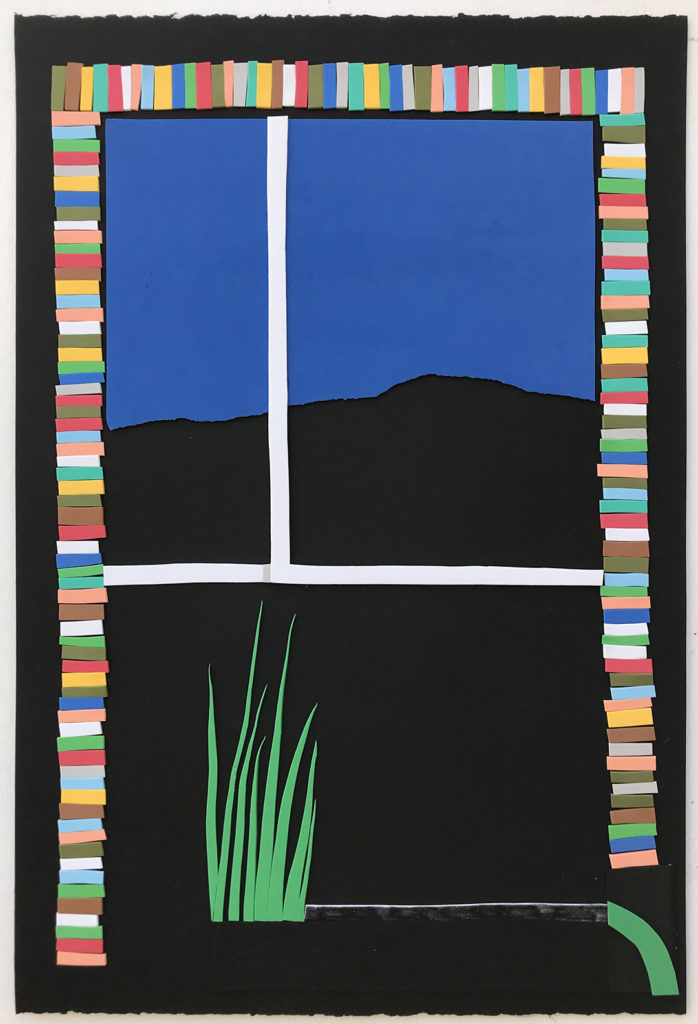
Mick Burson, Kitchen Window (2018). Courtesy of Richard Levy Gallery.
“The art scene in Albuquerque is vibrant and diverse,” Hunt tells artnet News. “Studio space is not expensive, and our light and sky provide an environment that inspires creativity and freedom. The local schools provide further teaching and learning opportunities and cultivate innovation and creativity within our community. The city also works closely with the creative sector to provide opportunities and support for artists living in our city through the Public Art Program.”
Hunt notes that focusing on local artists has never been intentional for the gallery, which also represents a number of national names. However, she says, “2018 just happens to be a very good year for local artists.”
Indeed, Art Miami will be treated to an impressive—and diverse—group of Albuquerque-grown talents.
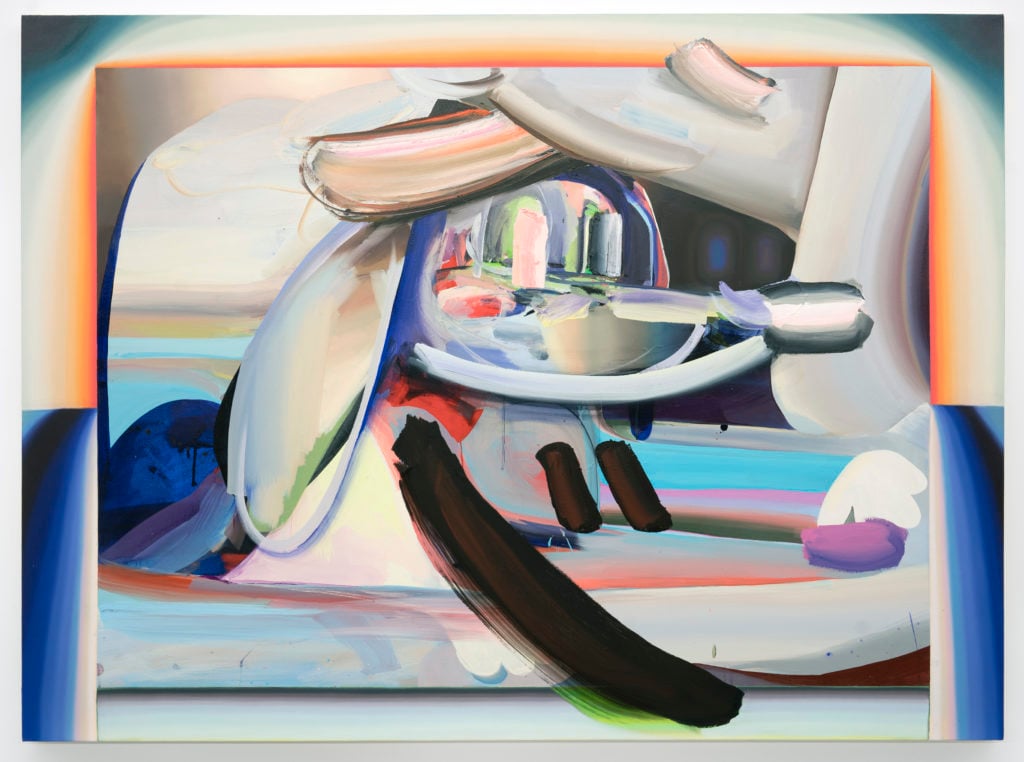
Raychel Stine, Three Rainbow River Jammers with Orange and Blue (2017). Courtesy of Richard Levy Gallery.
Mick Burson, a young artist currently getting his MFA in studio art at the University of New Mexico, works in painting, sculpture, and printmaking—often all at once. On view in Miami are a series of playful sculptures erected from everyday items—rolling papers, paint cans, AstroTurf. Colorful and witty, they’re reminiscent of B. Wurtz’s own humble assemblages
Another UNM alum, Earl McBride, makes large-scale abstract paintings that mix a variety of marks and gestures, from impastoed brush strokes to drips of spray paint and jagged wax crayon lines. Meanwhile, Raychael Stine—also a stylistic mixer—creates paintings that quickly shift from figuration to abstraction over and over again across the canvas. Stine’s painting Three Rainbow River Jammers with Orange and Blue (2017), for instance, features a gradated background reminiscent of fellow New Mexican artist Georgia O’Keeffe, while in the center of the canvas, dynamic brushstrokes come together to form rivers and dogs.
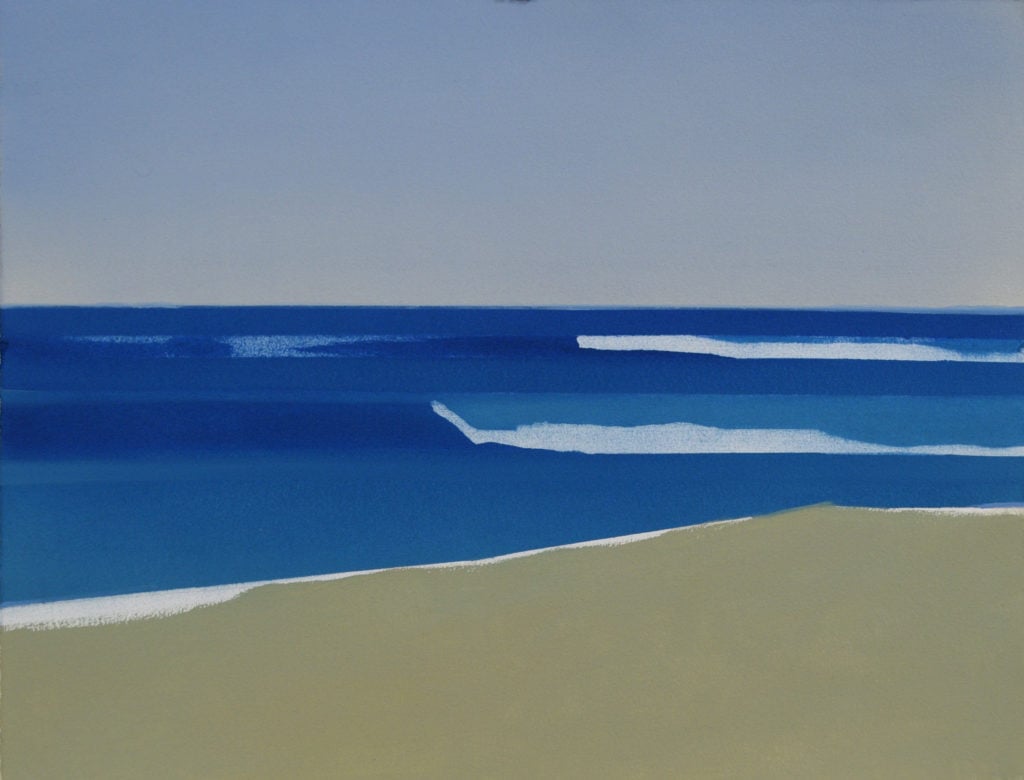
Beau Carey, NC Rollers (2018). Courtesy of Richard Levy Gallery.
Mining plein air sketches, personal photographs, and his own memories, Beau Carey paints impressionistic landscapes of places he’s visited around the world, such as Holden Beach in North Carolina and Acadia National Park in Maine—both of which are the subject of paintings on view in Miami. In true impressionistic fashion, Carey doesn’t capture the exacting detail of these places as much as the sensation of being there.
Playing with perspective and space, Emi Ozawa makes colorful minimalist sculptures that recall Donald Judd, Anne Truitt, and Sol Lewitt. Her works are based on Amidakuji, a game taught to children in her home country of Japan, which generates random pairings of lines. For the first time, a number of Ozama’s preliminary paper models, which she makes in preparation for the larger works, will be available in Miami as well.
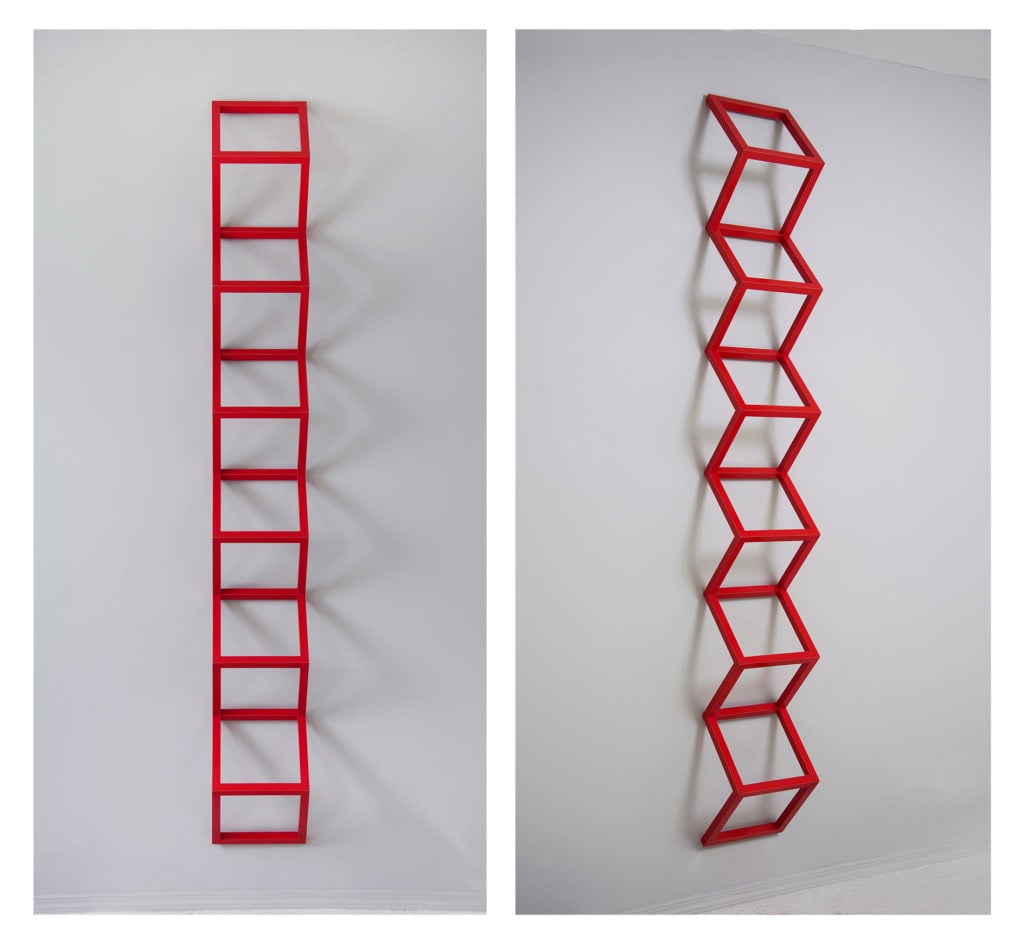
Emi Ozawa, Tallest Ever (2017). Courtesy of Richard Levy Gallery.
Joanne Lefrak, the director of education and curator of public practice at SITE Santa Fe, collaborates with poet Hakim Bellamy at the fair. The pair created a series of word-works etched on small plates of glass that cast shadows of cryptic texts on the wall, such as, “You are a monsoon of muse / Written on sheets of rain” (You are a monsoon (clear), 2017). Finally, another pair, husband-and-wife artist duo Vasher Studio, present constituent parts of their ambitious Plumerai project—a 99-panel, accordion-style screen created from a photograph of a previous work.
Tight-knit though the Albuquerque art scene is, participation in national fairs is an important opportunity for the gallery and its artists. It’s become a big driver of business for Levy.
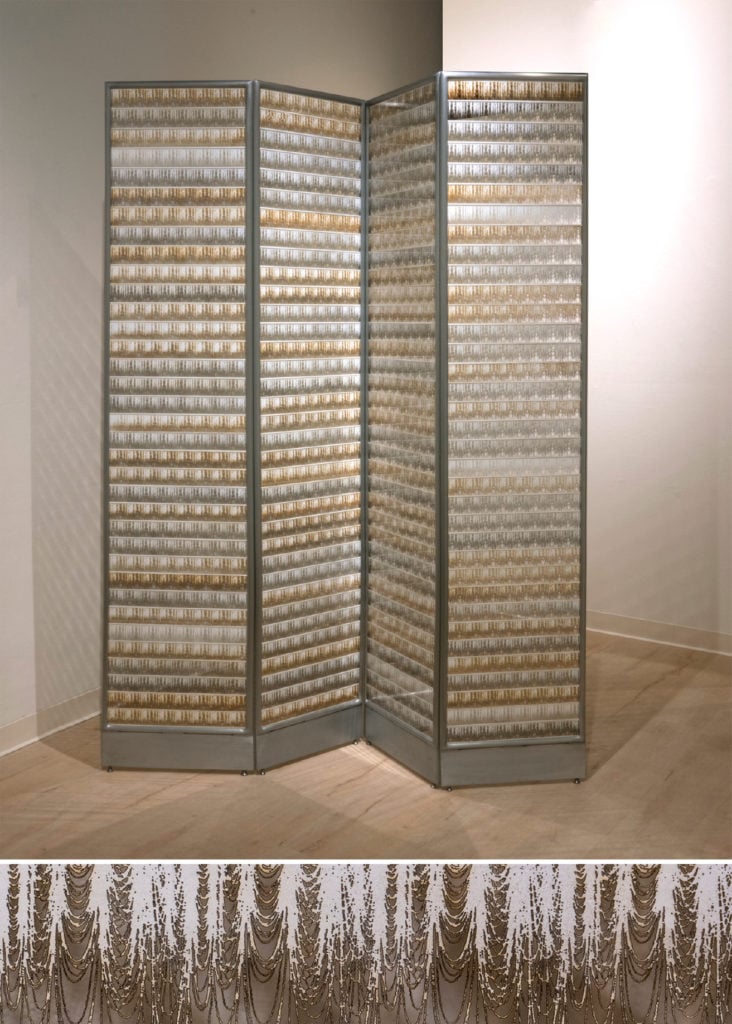
Vasher Studio, Plumerai (2017). Courtesy of Richard Levy Gallery.
“Art-fair participation is very important for reinforcing gallery visibility to a broad audience,” says Hunt. “The majority of our sales are made to out-of-state collectors whom we have met online or at fairs and with whom we have built a relationship. Participating regularly in art fairs gives us and our artists an international presence.”
